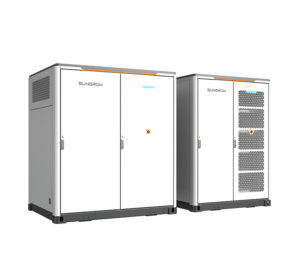The battery storage system is vital for organizations aiming to boost energy efficiency and ensure stable power supply. Sungrow delivers exceptional battery storage solutions that address the evolving needs of modern businesses. Designed for optimal performance, these systems are at the forefront of renewable energy integration and energy management.

Essentials of Battery Storage Systems
At its core, a battery storage system enables the storage of energy generated during periods of low demand for use during peak times. Sungrow’s battery storage solutions capitalize on this principle, allowing businesses to harness renewable energy sources effectively. By providing the ability to store excess solar or wind energy, these systems enhance overall energy reliability and significantly reduce operational costs.
Key Features of Sungrow Products
Sungrow’s offerings are distinguished by their cutting-edge features. The high-capacity lithium-ion batteries are designed for rapid charging and durable performance, ensuring that energy is readily available when needed. Furthermore, the integration of advanced energy management software allows for real-time performance tracking and optimization, empowering businesses to manage their energy resources effectively.
Transformative Impact on Energy Consumption
Sungrow’s battery storage systems provide transformative benefits for energy consumption patterns within businesses. By utilizing stored energy, organizations can reduce their dependence on expensive grid electricity, especially during peak pricing periods. This strategic usage not only results in cost savings but also promotes a commitment to sustainability, as it allows for greater utilization of renewable energy sources, ultimately leading to a lower carbon footprint.
Conclusion: Empowering Businesses with Sustainable Energy Solutions
In summary, Sungrow’s battery storage systems are a robust solution for companies striving to improve their energy efficiency and sustainability initiatives. With their advanced technology, practical applications, and significant cost savings, these systems empower organizations to take control of their energy consumption, paving the way for a more sustainable and economically sound future.








